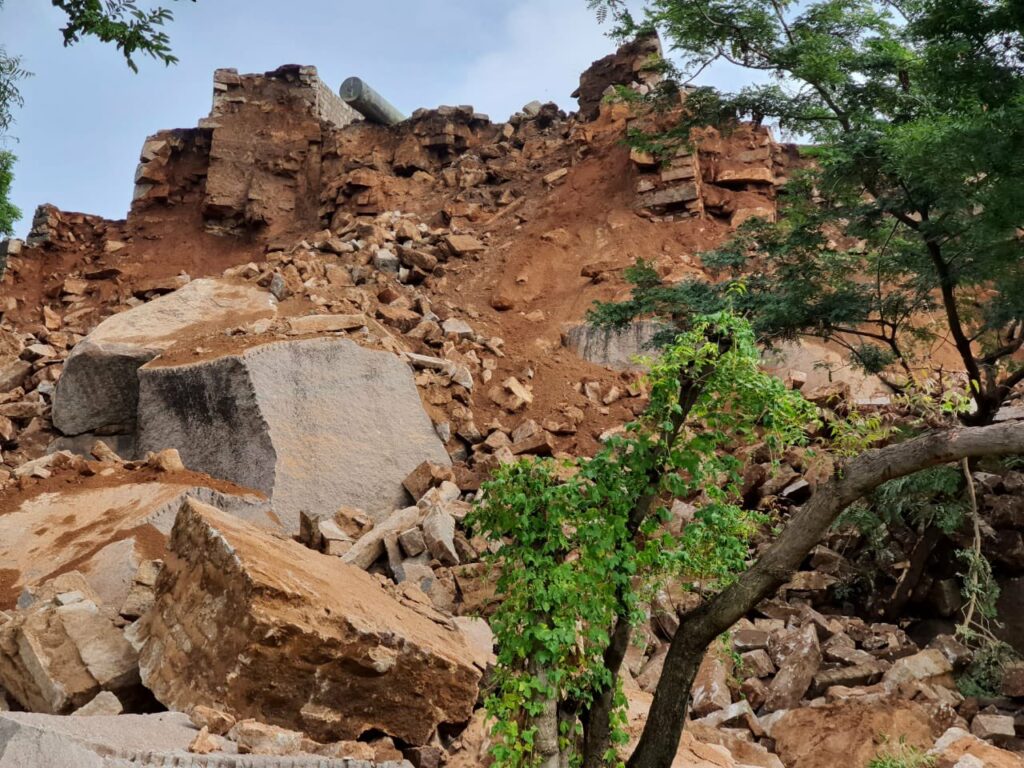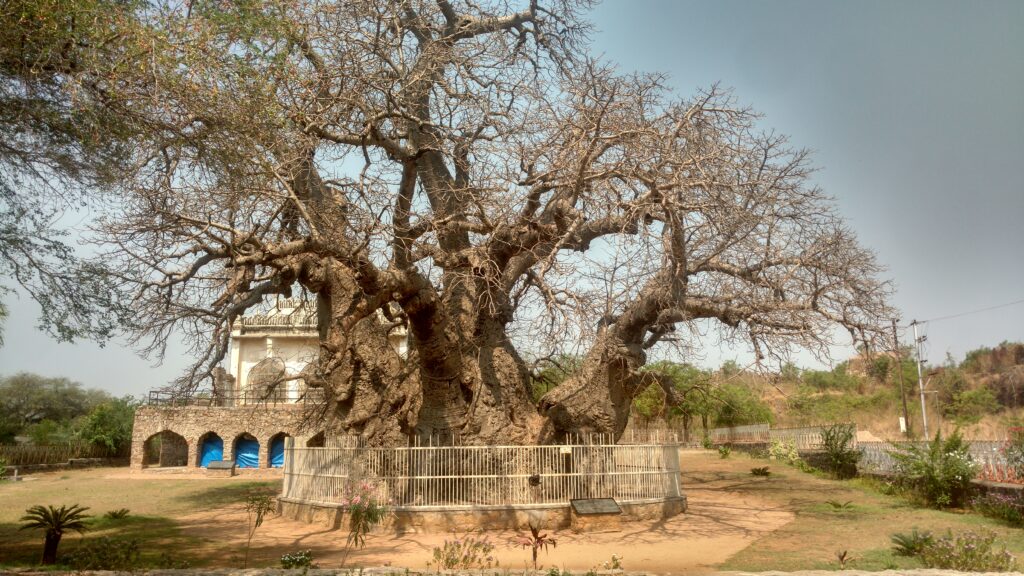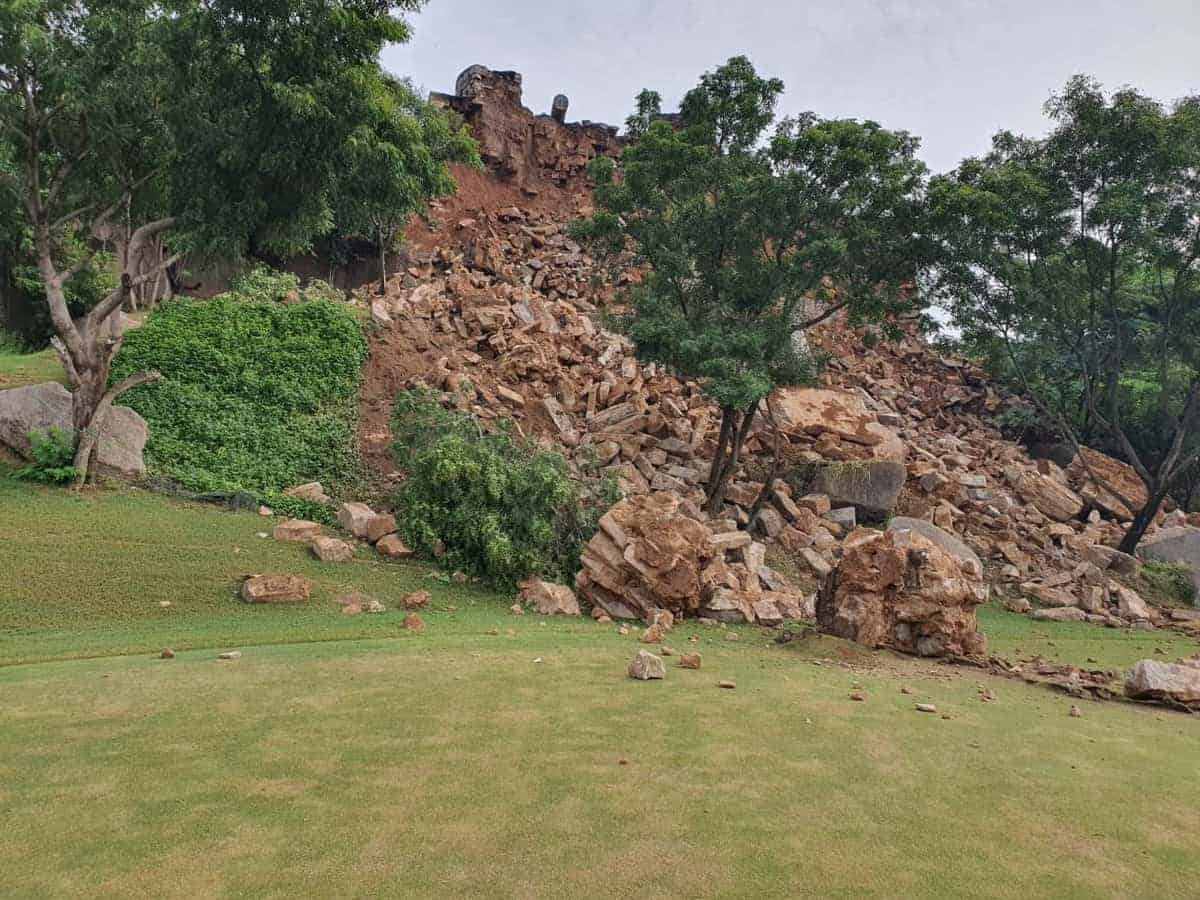In yet another case of damage to the city’s heritage, a huge portion of the historic Majnu Burj (bastion) in the Naya Qila area of the Golconda Fort came crashing down due to heavy rainfall that has been lashing Hyderabad over the last few days. The bastion was already in a vulnerable state since September, and wedge marks on the rock show some human intervention with regard to the collapse.
While it is yet to be ascertained as to how a solid piece of rock came crashing down, activists suspect that some work had been taken up by the Hyderabad Golf Course Association (HGA), which runs a golf course in the historic Naya Qila area, and also the Greater Hyderabad Municipal Corporation (GHMC), may have caused the damage.

The Naya Qila area is in fact believed to be over 500 years old, and is a part of the Golconda dynasty’s (which founded Hyderabad in 1591) remaining heritage in our city. The Naya Qila area, which is now cut-off from the Golconda fort due to local encroachments, was developed into an external fortification after the first Mughal attack (during the time of Emperor Shah Jahan) on Hyderabad in 1656.
Opposite the Majnu Bastion is the Laila Bastion. Other parts of Naya Qila which are open to the public are the Baobab tree, which is believed to be over 400 years old (it is said to have been planted there by African friars), the Mustafa Khan Masjid (which was built in 1561 and predates Hyderabad), and the Mulla Khyali Masjid, which is believed to be named after the Deccan poet Mulla Khyali.
While the Majnu Bastion’s collapse is the latest instance of the city’s heritage getting damaged, in the past the HGA had also disallowed the general public from entering the Naya Qila area. However, according the ASI, there is no such restriction and the public is free to visit the place. Given the current damage, the ASI has barred people from entering the vicinity.

When contacted, an ASI official, requesting anonymity said that they had informed their headquarters about the instability of Majnoon Bastion on September 29 and that the paperwork to undertake repairs had already begun. “However, it started raining heavily. On Friday, late in the night, the bastion collapsed. We have asked the ASI’s director general for permission to fix it and were about to send cost estimates,” he added.
It may be noted that the Golconda Fort and the Charminar are two monuments that fall under the jurisdiction of the ASI, which works the central government, while all the other heritage sites like the Qutb Shahi Tombs come under the purview of the Archeology Department of Telangana government.
History of the Golconda fort
The Golconda Fort’s origins are traced back to the 14th century when the Rajah of Warangal Deo Rai (under the Kakatiya Kingdom which ruled from Warangal) built a mud fort. It was taken over by the Bahmani Empire between 1358 and 1375. Later, it was developed into a full-fledged citadel by Sultan Quli who founded the Qutb Shahi kingdom in 1518 following the death of last sovereign of Bahmani Emperor Mahmud Shah.
Sultan Quli was a commander and later governor of Tilang (Telangana), under the Bahmani Empire (1347-1518), when its second capital was at Bidar. Sultan Quli, who was originally from Hamadan, rose to the level of Governor under the Bahmani Empire. At this point of time he was given the fort, around which he began developing a walled-city. It eventually came to be called Golconda Fort (name derived from Telugu Golla-conda, or shepherds hill).
The fort has 87 bastions, and eight gates, of which a few are not accessible to the general public as they are under the army control. It is believed to be one of the Deccan’s most impregnable forts, and had kept Mughal emperor Aurangzeb’s army at bay for eight months until he succeeded and conquered Hyderabad in 1687.
Hyderabad was founded in the year 1591 by Mohd. Quli Qutb Shah, the grandson of Sultan Quli, with the Charminar being the city’s foundation. The city turned 429 years old in 2020.
A petition has also been created to save Naya Qila and the Golconda fort by local Hyderabadis. Link: http://chng.it/CFKtfQjYrb

